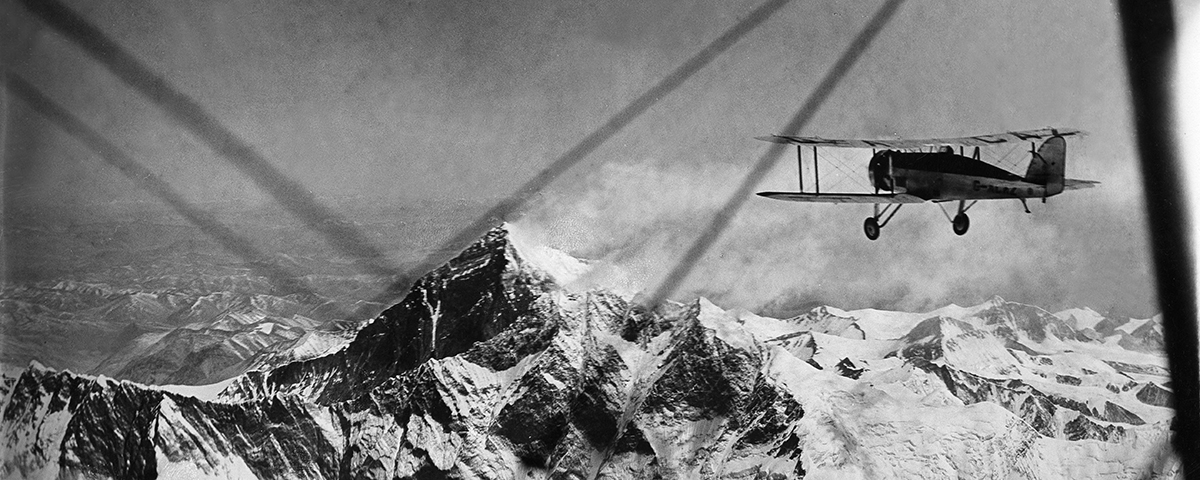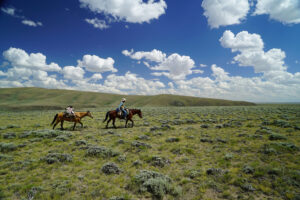Twenty years before Edmund Hillary and Tenzing Norgay became the first men to set foot on the 29,029-foot summit of Mount Everest on May 29, 1953, intrepid British aviators had looked down on its untrodden snows from two single-engine biplanes. The Everest flight was the brainchild of Colonel Stewart Blacker, an air-minded regular army officer who had earned a civilian flying license in 1911. Blacker submitted his expedition plans to the Royal Geographical Society in March 1932, emphasizing that, apart from scoring a notable “first” for Britain if the attempt was successful, the expedition had a serious scientific purpose: photo-surveying and mapping a large area of the Himalayas.
Squadron Leader Douglas Douglas-Hamilton, the Marquess of Douglas and Clydesdale and commanding officer of No. 602 Squadron, Royal Auxiliary Air Force, was selected to pilot the lead airplane, with Flight Lt. David McIntyre, his squadron deputy, flying the second aircraft. Both planes would carry observer-photographers, with Blacker serving as senior observer. Air Commodore P.F.M. Fellowes was appointed expedition leader and support pilot. The RAF in India agreed to supply a reserve pilot and provide logistical support to the expedition.
Lord Clydesdale overcame problems with funding the project during the lean days of the Depression by securing the financial backing of Lady Lucy Houston, the wealthy and intensely patriotic former showgirl who had sponsored the RAF’s victorious 1931 Schneider Trophy team. Gaumont British Picture Corporation would film the expedition, and The Times acquired newspaper and photographic rights. Meanwhile expedition planners had to obtain permission from the king of Nepal to fly across his territory to Everest.
The airplanes selected for the attempt were the experimental Westland P.V.3, soon renamed the “Houston-Westland,” and a virtually identical Westland P.V.6 Wallace GPA (military general purpose aircraft). Both rugged biplanes had a comparatively large wing area, with high aspect ratio. Powered by 630-hp supercharged Bristol Pegasus S3 engines, they had a ceiling of about 34,000 feet at a time when the world altitude record for fixed-wing aircraft was less than 44,000 feet. For this flight the observers’ open cockpits would be covered with hinged panels.
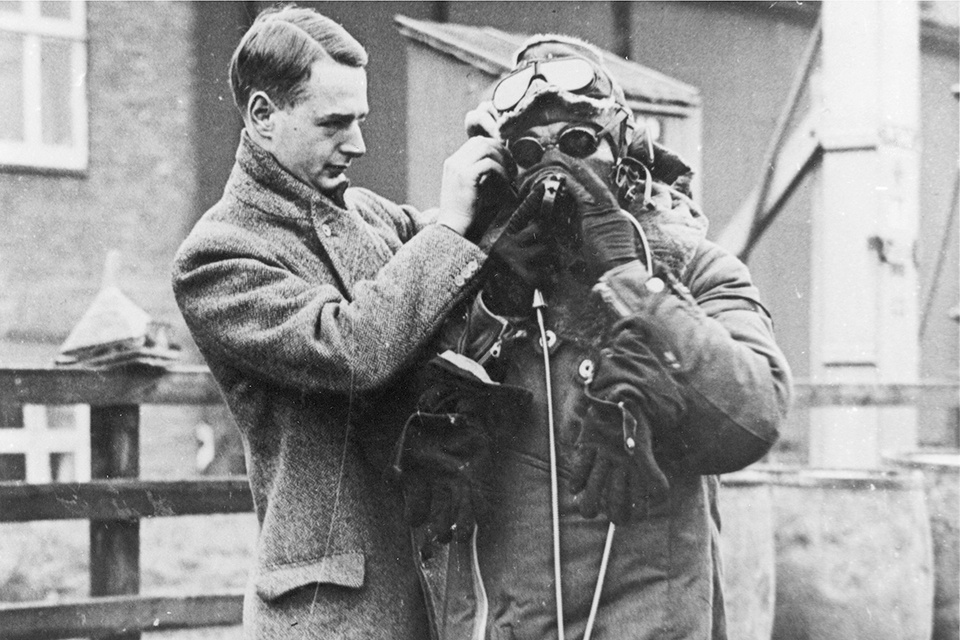
Next the planners had to tackle the critical problems of supplying the airmen with oxygen and keeping them warm above 30,000 feet. With weight a crucial factor, it was fortunate that Vickers Armstrong was able to supply lightweight oxygen cylinders made from a new type of alloy steel. The movie and still cameras were another heavy addition to the cargo, with each film spool alone weighing 4½ pounds.
For protection against the extreme cold, the airmen were outfitted with cumbersome double-layered, electrically heated flying suits, as well as heated gloves and goggles. The tiny aperture in each airman’s oxygen regulating valve, which was susceptible to blocking by particles of ice or small insects, represented a worrisome vulnerability.
In February 1933, the crated Westlands were shipped to Karachi (then in imperial British India) to be reassembled by the RAF. Meanwhile a de Havilland Fox Moth piloted by Fellowes, a Gipsy Moth flown by Clydesdale and a Puss Moth with McIntyre at the controls left England together on an adventurous odyssey that took them by stages across Europe and the Middle East to Karachi. Fellowes was accompanied by his wife, Clydesdale by Times journalist E.C. Shepherd and McIntyre by mechanic C.H. Hughes. The Moths were to be the expedition’s maids of all work, including vital weather reconnaissance flights.
By late March, the expedition was established at Lalbalu airfield, Purnia, in the northern Indian state of Bihar, about 50 miles south of Everest, ready and waiting for a favorable weather report. The forecast for April 3 was for winds of 67 mph at 28,000 feet, well above the prescribed limit of 40 mph. But after Fellowes made an early morning flight in one of the Moths and established that Everest was free of clouds, they decided to send off the Westlands.
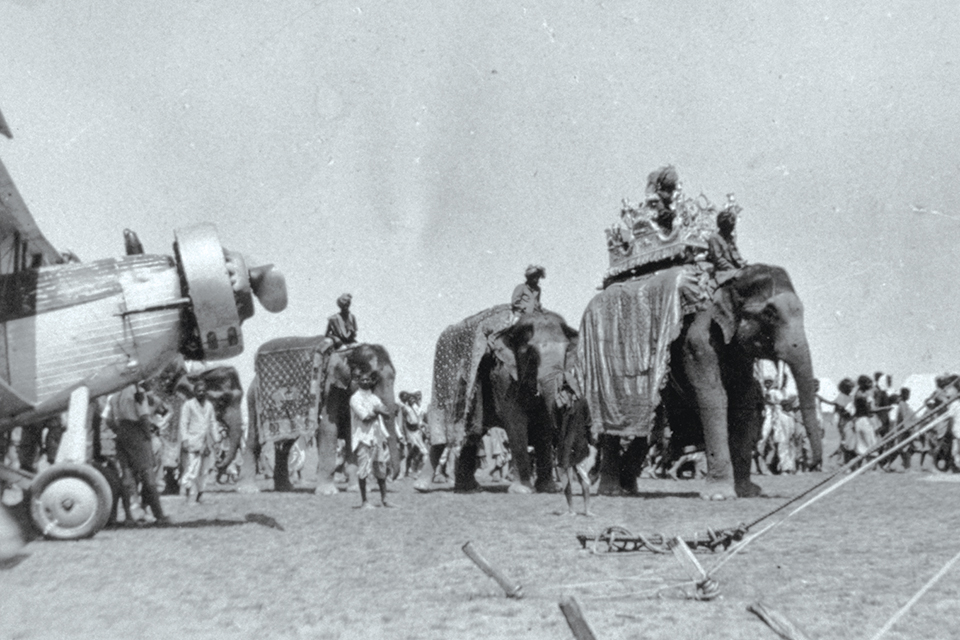
Clydesdale piloted the Houston-Westland, with Blacker as observer-photographer, while McIntyre and Gaumont cameraman S.R. Bonnett crewed the Wallace. Shortly after takeoff they encountered a heavy dust haze rising to a great height that completely obscured the ground leading up to the higher mountain ranges. Some 30 minutes later at 30,000 feet, battling fearsome headwinds, they gained their first sight of Everest, although it proved impossible to identify landmarks until they were about 20 miles from the summit.
Closing on Everest at 31,000 feet, they realized that the wind had driven them off course and they were approaching the mountain from the leeward side. Clydesdale later recalled: “We were in a tremendous down-rush of air. Though the machine continued to climb, it was climbing in an air current that was carrying it down at a much greater velocity….The great bulk of Everest was towering above us….There was nothing we could do but climb straight ahead and hope to clear the lowest point in the barrier range….With the aircraft heading virtually straight into the wind, we crabbed sideways towards the ridge, unable to determine if we were level with it or below.”
In the rear cockpit, Blacker had a different though no less alarming perspective: “The crest came up to meet me as I crouched peering through the floor and I almost wondered whether the tail-skid would strike the summit…and indeed before I expected it we swooped over the summit….The pilot swung the machine again skilfully towards the westward into the huge wind force sweeping downwards over the crest….We were now for a few moments in the very plume itself and, as we swung round, fragments of ice rattled violently into the cockpit. We made another circuit and then another as I exposed dozens of plates….We could not wait long over the mountain for the oxygen pressure gauge in my cockpit was moving downwards, an ominous sign.” Not long after, they turned for home.
McIntyre and Bonnett, in the Wallace, had encountered similar problems, estimating that if they cleared the ridge it would only be by the narrowest of margins. But then, “A fortunate up-current carried us up by a few feet and we scraped over.” In all the excitement, Bonnett trod on his oxygen pipe, damaging it. He just managed to tie a handkerchief around the split before he collapsed unconscious on the cockpit floor. McIntyre could do nothing to help; it was only when nearing Lalbalu at about 8,000 feet that, to his relief, he saw Bonnett “struggling up from the floor tearing off his mask and headgear. He was a nasty green shade but obviously alive.”
At Lalbalu, rejoicing over their successful flight soon turned to disappointment when it became clear that Bonnett had been unable to operate his cameras for half the flight. In addition, the team later found that the photos from both aircraft were of unacceptable quality due to the dust haze surrounding the mountains.
Obviously a second flight would be necessary. Before that, however, they decided to make a test flight to check all the equipment. This took place the next day over Mount Kanchenjunga, 90 miles east of Everest. The RAF reserve pilot, Flying Officer R.C.W. Ellison, and Bonnett manned the Houston-Westland, while Fellowes and cinematographer A.L. Fisher crewed the Wallace.
Flying into extreme turbulence over the peaks, the two planes became separated. Fellowes recalled that it felt as though the Wallace were “a rat being shaken vigorously by an expert terrier,” while Bonnett in the observer’s cockpit of the Houston-Westland remembered a bump of such magnitude that he was certain they would be “smashed to pieces.”
Then Fellowes experienced oxygen starvation. Losing his bearings, he eventually made a high-altitude forced landing near Shampur railway station, well short of Lalbalu. He and Fisher had great difficulty in preventing a crowd of excited locals, who had never seen an airplane before, from running into the propeller. After returning to base the next day, the expedition leader took to his bed with a fever.
The near disasters of the Kanchenjunga flight alarmed expedition backers, who had enthusiastically congratulated the team on the success of the first Everest flight. A concerned Lady Houston even sent Clydesdale a cautionary telegram advising, “Do not tempt the evil spirits of the mountain to bring disaster.” Moreover, having fulfilled its obligations by covering two Himalayan flights, their insurance company refused to cover a third attempt unless a large additional premium was paid.
Ignoring those concerns and acutely conscious that the scientific objectives of the expedition had not yet been fully achieved, Clydesdale and Blacker in the Houston-Westland and McIntyre and Bonnett in the Wallace decided to press ahead with another Everest flight—without telling the ailing Fellowes, in case he banned it due to insurance concerns. They had sufficient oxygen for just one more Himalayan flight.
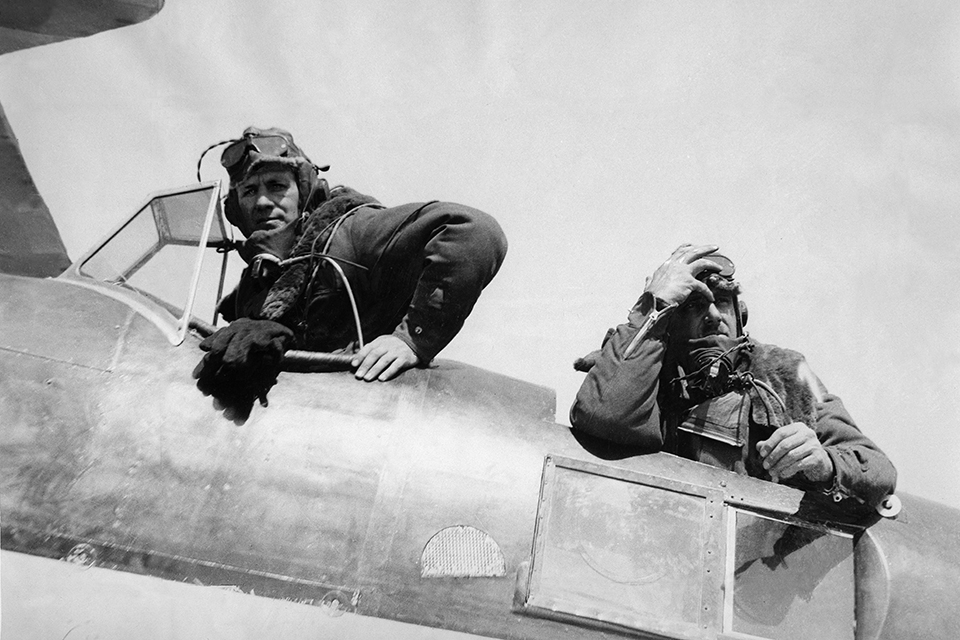
The two Westlands took off from Lalbalu early on April 19, flying into a tremendous headwind. Blacker wrote: “On we went up to 31,000 feet, the mountain getting ever closer and I started busily taking oblique photographs of those unexplored declivities, ridges and ranges….I alternated between diving down to the survey camera to help it do its appointed task and leaning over the side of the open cockpit to take obliques.” Having reached the apex of their course about 3½ miles from Everest, Clydesdale turned south to return to base.
McIntyre meanwhile continued battling the headwind. The pilot thought he and Bonnett still had something to prove after the observer’s oxygen problems on the first flight had prevented them from completing their photographic assignment. McIntyre recalled: “The next fifteen minutes was a grim struggle. The altimeter showed 34,000 feet. The menacing peak with its enormous plume whirling and streaking away to the South-East at 120 miles per hour appeared to be almost underneath us but refused to get right beneath. After an interminable time, it disappeared below the nose of the aircraft….We appeared to be stationary….Then suddenly there was a terrific bump—just as one might receive flying over an explosives factory when it blew up. It felt as if the wings should break off at the roots….The bump was a relief in a way, as it indicated the summit and was the signal for a careful gentle turn to the right to settle down on our predetermined compass course for home.”
Fortunately, the wings remained intact, and both Westlands and their exhausted crews returned safely without further incident. The flight had been an unqualified success. They had brought back nearperfect aerial photographs for the first detailed scientific survey of the Himalayan region.
Although Fellowes was predictably livid at what The Times described as “a piece of magnificent insubordination,” he calmed down when congratulatory telegrams started arriving from, among others, the chief of the air staff, Sir John Salmond. As an example of British imperial derring-do, their achievement could scarcely have been bettered. Clydesdale and McIntyre later received the Air Force Cross.
Frequent contributor and RAF veteran Derek O’Connor writes from Amersham, Bucks, UK. Further reading: Flight Over Everest and The Pilot’s Book of Everest, both by Lord Clydesdale; First Over Everest: The Houston–Mount Everest Expedition 1933, by Air Commodore P.F.M. Fellowes; and Roof of the World: Man’s First Flight Over Everest, by James Douglas-Hamilton.
Originally published in the September 2011 issue of Aviation History. To subscribe, click here.

